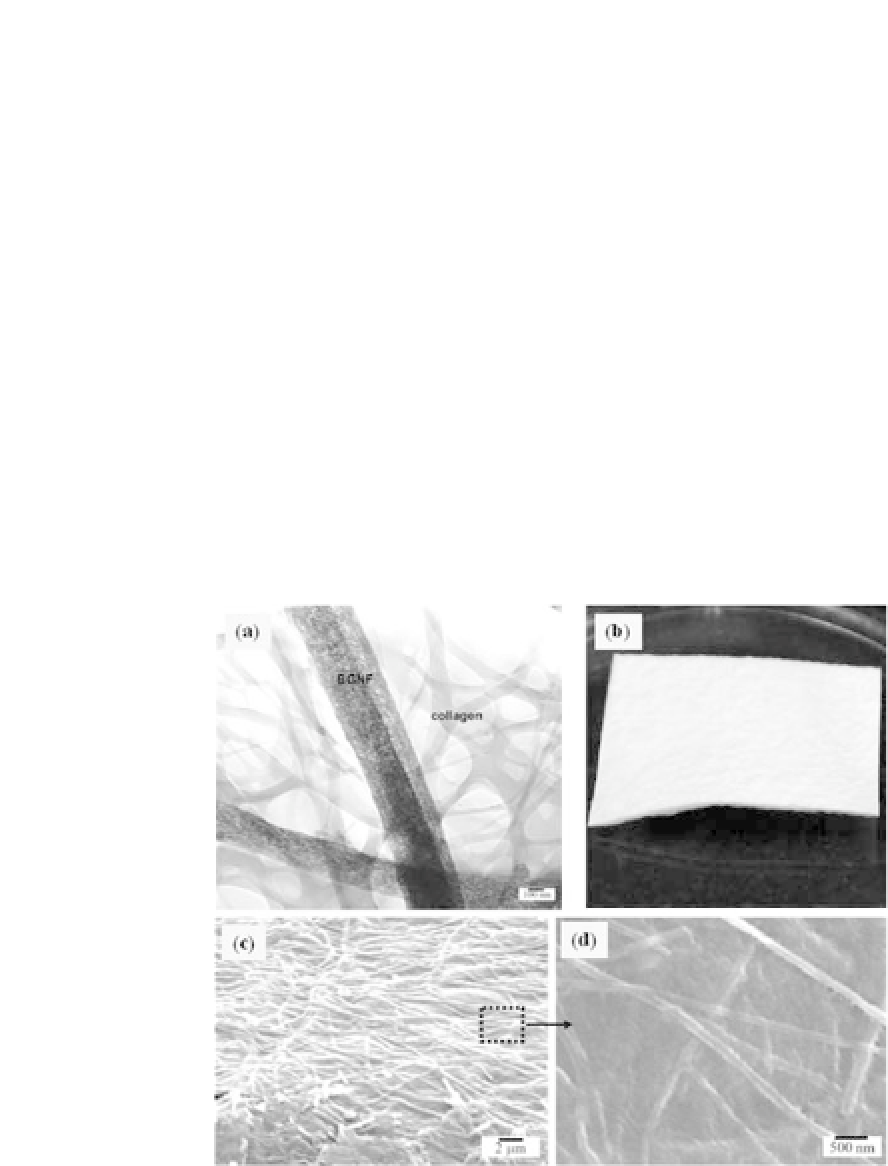Biomedical Engineering Reference
In-Depth Information
PCL polymer, highlighting the merits of bioactive glass nanofibers
in terms of both morphology and composition. Similar processing
steps, involving the use of a sol-gel solution, mixing with polymer
binder, and thermal treatment, have also been applied to produce
bioactive inorganic nanofibers with different compositions, such as
hydroxyapatite,
26
-
28
fluorohydroxyapatite,
26
and silica.
29
Althoughbioactiveinorganicsmaybeagoodsourceforstimulat-
ing bone cell differentiation, matrix formation and mineralization,
poor mechanical strength, namely, brittleness, has restricted their
use as matrices for bone regeneration. Some recent works have uti-
lized inorganic nanofibers as a bioactive component for nanocom-
posites with polymers.
30
,
31
Nanofibrous bioactive glass added to a
collagen solution was produced to a nanocomposite, wherein col-
lagen fibrils and inorganic nanocomponents were organized on the
nano scale (Fig. 14.3). Synthetic polymers, such as PLA and PCL,
Figure 14.3.
An electrospun bioactive glass nanofiber was used as an
inorganic nanofiller for the production of nanocomposites with collagen:
(a)TEMimageshowingtheglassnanofiber(BGNF)andcollagenfiberswell
organized.(b)Compositeproducedintoathinmembrane.(c)SEMimageof
the nanocomposite showing the microstructure (adapted with permission
from Ref. 30; copyright 2007 Wiley Interscience Co.).








Search WWH ::

Custom Search